Contents
Most people are of the opinion that the arrival of fall means the end of the growing season. Well, before you pack away your garden tools, allow us to tell you that summer is not only the high-season in the vegetable Edible garden, but autumn is also well-productive. The only catch is – Autumn is the time to grow green vegetables or root crops. Basically, the weather cools down in fall, but the soil is still warm, which makes planting seeds easier.

However, it’s a good idea if you start planting in the late summer only so that you can extend the harvest into fall and even winter by growing winter-season crops. Simply put, autumn is an amazing time to fill your polytunnels, nursery, and garden beds with an extensive range of green veggies, root crops, and savory herbs. But before we tell you about fall garden plants and vegetables that you can grow in your edible garden, there are certainly other things that you need to be aware of.
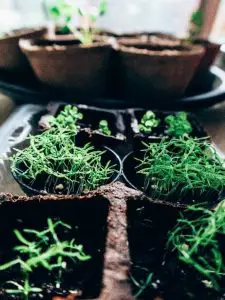
Timing Is Everything!
When you are planning to start an edible garden in autumn, you need to make sure that your timing of sowing seeds is right. This is a pretty simple task. To calculate the date – look at the “days to maturity” mentioned on the seed package, and count reverse from the first expected autumn rime(frost) date. That’s when the crops should be planted. For instance, if your fall frost usually occurs around October 31 and you plan to grow “radishes” that mature in 25 days, then you need to plant them around September 22.
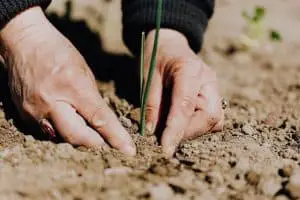
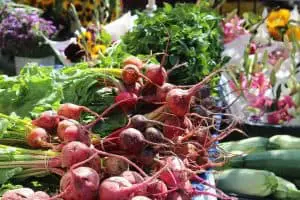
Prepare The Garden
It is essential for you to make room in your garden by removing crops that are no longer performing well or ones that have already been harvested. Pull any weeds so that they don’t take moisture and nutrients from your young plants. A healthy soil in your garden would mean healthy plants. To prepare beds for your fall crop, add a thin layer of worm castings, compost, or aged manure into the soil. Finally, you are ready to plant seeds to create your edible garden!, Here is the beginners guide to follow.

What Plants To Grow In Fall?
There are plenty of crops that can be grown easily in the fall season. You just have to figure out when you want to sow. If you germinate in early August or late July. Fall gardens are able to grow the broccoli, best cabbage, and cauliflower you’ve ever tasted! While in more cold temperatures, it’s best to sow rutabagas, turnips, and carrots to harvest in the fall.
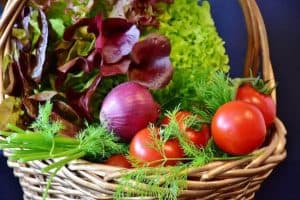
Fall Vegetables
Some of the common fall vegetables to grow available in the market are as follows:
- Spinach- Autumn season is the prime time for growing spinach. It is the most common green vegetable which requires cool temperature and ample moisture to grow. It is best if you directly sow the seeds in the garden before the first frost date in autumn. You can harvest the leaves as soon as they become several inches long and continue to harvest until the flower starts to grow. The spinach crops can easily survive higher temperatures, frost, and freeze, which makes it a must to have in your edible garden!
- Winter Lettuce- Growing winter lettuce in your garden is an excellent way to add leafy greens to your diet. It is the backbone of any green salad and should be sown 10-14 weeks ahead of the first frost. Not being very difficult to cultivate, winter lettuce comes with many health benefits.
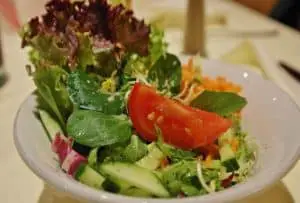
- Silverbeet- It is quite similar to spinach but is large in size and has a strong flavor. Silverbeet can be cultivated six to eight weeks ahead of the first frost date. Not only is this vegetable simple to cultivate, but you can easily and quickly cook them using methods such as steaming, stir-frying, and microwaving. These green veggies are rich in Vitamin A and K.
- Kale- Kale is a great addition to your edible garden as it is extremely nutritious – a source of Vitamin C, and includes powerful antioxidants and minerals. It needs to be sown 10 to 12 weeks ahead of the first frost. Moreover, it is exceptionally cold tolerant, so there is no need to be worried about their withering away in an extreme winter climate.
- Cabbage– Sow the seeds in the garden directly 12 to 14 weeks ahead of the first autumn frost so that you can enjoy cabbage whenever you want! Plus, these veggies reach their peak flavor in fall after they are exposed to light frost. So, without any worry, you can cultivate them in your edible garden. It comes in a variety of colors and shapes, including red, white, and purple, and its leaves can be smooth or wrinkled. Cultivating cabbage in your garden would definitely enhance its beauty as well as provide you with nutrition.
- Broccoli- This is another green vegetable grown in autumn, seeds of which are sown 10 to 12 weeks ahead of the first frost. It usually thrives in cooler temperatures and easily withstands hard frost. Moreover, the fall frost enhances the flavor of broccoli, making them extra sweet and soft. If you are planning to sow in your edible garden a delicious as well as nutritious vegetable, then definitely go for broccoli!
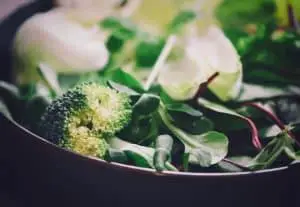
- Cauliflower- Cauliflower and Broccoli are quite similar looking plants, as they both belong to the category “Cole crops” or “brassicas.” Sow them before 10 to 12 weeks of the first frost cycle to get desirable results. When grown in autumn, cauliflower has tender and tight heads and is cooked extremely well.
List Of Fall Crops
Given below are some of the popular fall crops which you can grow in your edible garden:
- Peas- Peas is not just a spring staple but is also a fall garden crop and should be sowed exactly ten weeks before the frost date. It is because peas can’t withstand high hard frost. Plus, it can take a bit more time to grow peas in fall, but when you taste the pea’s crunchiness, it will be worth the effort.
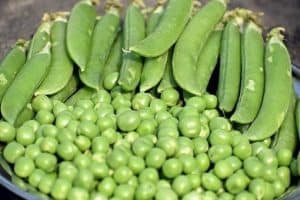
- Mustard Greens- Spice up your edible garden by planting mustard greens crop. They need to be sowed 8 to 10 weeks ahead of the first frost and are quick to germinate. Moreover, mustard greens have no problem with light frosts, but temperatures below 20-degree Fahrenheit usually destroy these plants.
- Brussels Sprouts- They need to be cultivated 10 to 12 weeks prior to the first frost and can be harvested until the hard freeze strikes. These resemble mini cabbages and are cleaned, cut, and cooked to make a nutritious main dish or side dish. They are rich in fiber, Vitamin K, antioxidants, and might help in maintaining a healthy sugar level. So, if you add them to your edible garden, you won’t regret your decision.
- Broad beans- Vicia faba, also known as broad beans, are a great source of carbohydrates, proteins, and vitamins A, B1, and B2. They grow in most soils and withstand the harsh and cold climate. These are sowed in the fall, and they grow through winter.
- Bok Choy- Also referred to as Pak choi, is a Chinese cabbage that is tender, smooth, and crisp with a peppy flavor. Sowed before 12 to 14 weeks of the first frost, Pak choi is quick to grow and is packed with healthy vitamins A and C as well as iron and calcium. If they are present in your garden, you can add them whenever you wish into your fall stews and soups.
Best Root Vegetables
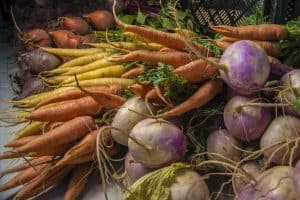
The following are some of the root vegetables that you can grow in the Autumn season.
- Horseradish- It is a root vegetable that needs to be sown between 12 to 14 weeks ahead of the first frost. Plus, this veggie grows when there is enough winter to force the plants into dormancy. Typically used as a condiment, horseradish provides many health benefits such as hindering cancer cells’ growth, improving respiratory health, and fighting dangerous bacteria.
- Turnips- Sown prior to 8 to 10 weeks of the first frost, the turnip is a root vegetable with a purple top and creamy white base. It is usually cultivated for its soft growing tops and fleshy roots, which are low in calories, and provide multiple nutrients. Though it is a cold climate crop, it does need a long growing season to mature.
- Carrots- This is the most common root vegetable which needs to be planted between 10 to 12 weeks prior to the first frost. It is the ultimate health food- delicious, crunchy, and nutritious. Carrots help in weight-loss, reduce cholesterol, and improve the health of the eye. In short, if you cultivate carrots in your precious garden, you will enjoy its numerous health benefits. Read on Thinning Carrots
- Onions– Onions are quite a common type of root vegetable that vary in size, color, and shape. Planting them takes a lot of work, and it’s necessary to sow them on or around the first frost. These vegetables have a pungent flavor and some additional medicinal features.
- Radish- It is an edible root vegetable consumed throughout the world, usually in a salad. This root veggie is quick to grow and can comfortably survive hard freezes as well. Radishes need to be planted between 12 to 14 weeks ahead of the first frost to get the best results. Besides, this crunchy detoxifier is said to help protect the body against kidney, intestinal, colon, and oral cancer.
Some Herbs To Grow In Fall
After listing some green veggies, root vegetables, and crops, we are providing you with certain herbs that you can grow in your garden to enhance its beauty.
- Rosemary- It is an evergreen herb with a woody fragrance that is native to the Mediterranean. Rosemary is often used as a condiment to make bodily perfumes and for certain health benefits. Sowing these herbs in your garden between 10 to 12 weeks prior to the first frost would allow you to enjoy the benefits of these herbs on a regular basis.
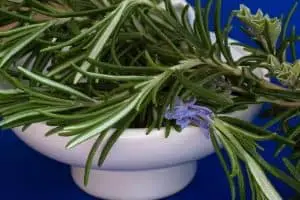
- Florence Fennel- Florence fennel should be grown 2 to 3 weeks before the spring’s average last frost date. It is grown for its leaf stalks and round base, which are used as vegetables. This plant usually takes 12 to 14 weeks to harvest and prefer well-drained soil and full sun.
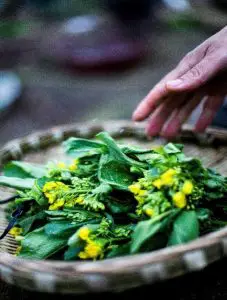
- Parsley- Parsley is a popular herb used to elevate the flavor of different dishes such as salads, soups, and fishes. It is also a nutritious herb which increases your immunity, as well as improves skin conditions like acne. This plant is best grown in fall between 10 to 12 weeks prior to frost.
- Garlic chives- Also referred to as Allium tuberosum, these are pleasant herbs with pretty white flowers. It is commonly used for seasoning and has a strong garlic flavor. These chives are usually found in Chinese and Japanese cuisines. It is an amazing ingredient, and if they are available in your edible garden, you can use them instead of actual garlic to add a tangy flavor to your dishes.
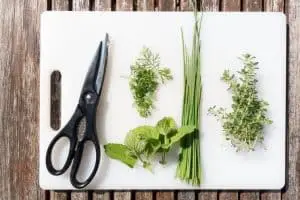
Ways To Extend The Autumn harvest
The following are some simple ways to protect your crop while growing in the fall season.
- Mini Hoop Tunnels: These tunnels are simple and practical to build using metal conduit and are covered with a sheet of polyethylene. They extend the autumn harvest by three to six weeks and boost vegetable production while providing protection to your crops.
- Cold Frame- A cold frame is deep without a base box with a transparent top. It creates a suitable climate around the vegetable by seizing solar energy. This can extend the harvest by six to eight weeks in autumn and spring both.
- Polytunnel- A polytunnel in your edible garden provides all-year-round protection to your crops. Made from steel, covered by polyethylene, it has an elongated, curved structure that safeguards your plants from different types of weather.
- Cloches- Cloches are mini-greenhouses put over a plant in autumn or spring to protect it from bleak weather. If you have a glass jar, milk jug, or even a water bottle at home, you can easily use them in effective cloches.
Conclusion
When the next time autumn comes, remember that you need to make a shift instead of switching off gardening altogether. It’s time for you to move from heat-loving crops to green veggies, root crops, and herbs, which can be grown in autumn as well as winter. We have mentioned above all the plants and vegetables that can be grown during the fall season. Additionally, we have discussed certain things you need to consider while doing harvesting at this time. Hopefully, all this information will help you to create an edible garden in autumn!
Want to know more about gardening ?
Fill in your email address in the form below and you'll receive all the latest updates directly in your in-box.
Thank you for subscribing.
Something went wrong.